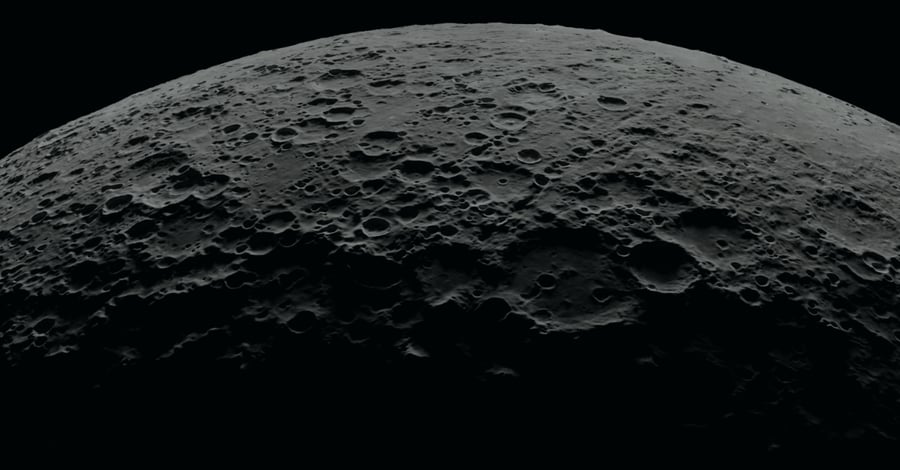Manufactured with Speed and Precision
The manufacturing capabilities you need and the engineering support you want, all from a single partner.
Submit a DesignKey Points
Space environments present unique challenges for optical components, requiring careful consideration of aerospace industry standards for aerospace coating durability and performance. Here are the critical takeaways:
- Anti-reflective coatings must withstand extreme temperature cycling, radiation exposure, and atomic oxygen erosion
- Material selection and coating application significantly impact coating longevity
- Testing protocols should simulate actual space conditions to validate coating performance
- Early partnership with manufacturing experts can help optimize coating specifications
- Proper coating application and selection can extend mission lifetimes and improve system reliability
When designing optical systems for space applications, the durability of anti-reflective aerospace coatings can mean the difference between mission success and failure. As space systems become more sophisticated, the demands placed on optical components continue to grow, making coating selection and validation increasingly critical.
The stakes are particularly high in aerospace applications – a failing anti-reflective coating can compromise sensor performance, reduce power generation efficiency in solar cells, or degrade critical optical communication systems. Understanding the factors that affect coating durability is essential for engineers working on space-rated optical systems.
Read Our Comprehensive Guide to Optical and Thermal Coatings
The Space Environment Challenge
Space presents one of the most hostile environments for engineered materials. For optical systems in particular, the combination of factors that can degrade anti-reflective coatings requires careful consideration during the design phase.
Thermal cycling in space can range from +120°C in direct sunlight to -150°C in shadow, creating immense stress on coating adhesion. Add to this the constant bombardment of radiation, atomic oxygen exposure in low Earth orbit (LEO), and the risk of micrometeoroid impacts, and it becomes clear why coating durability cannot be an afterthought.
These environmental factors don't act in isolation – their combined effects can accelerate degradation beyond what individual testing might suggest. Engineers must consider these synergistic effects when specifying anti-reflective coatings for space applications.
Critical Factors Affecting Coating Performance
The performance of anti-reflective coatings in space depends on multiple interrelated factors that engineers must carefully balance. Understanding these elements is essential for specifying the right coating solution.
Temperature Effects
Repeated thermal cycling can cause delamination between coating layers or separation from the substrate. Anti-reflective coatings must maintain both their optical and mechanical properties across the full temperature range they'll experience in orbit.
The coefficient of thermal expansion (CTE) mismatch between coating layers and substrates is particularly critical. Even small mismatches can lead to stress accumulation over repeated thermal cycles, potentially causing coating failure.
Radiation Exposure
High-energy particles and radiation can alter the optical properties of anti-reflective coatings over time. This is particularly concerning for systems that require precise light transmission or reflection characteristics.
UV radiation exposure can cause color center formation in some coating materials, leading to increased absorption and reduced coating performance. Proper material selection and protective measures can mitigate these effects.
Atomic Oxygen Erosion
In low Earth orbit (LEO), atomic oxygen can gradually erode exposed surfaces, including optical coatings. Proper material selection and protective measures are essential for anti-reflective coatings in these environments.
The erosion rate depends on orbital altitude, solar activity, and material composition. Some anti-reflective coatings incorporate protective top layers specifically designed to resist atomic oxygen attack.
Material Selection Considerations
Choosing the right materials for anti-reflective coatings requires balancing optical performance with environmental durability. Engineers must consider both immediate performance needs and long-term maintenance requirements.
Common Coating Materials
Traditional anti-reflective coatings often use alternating layers of high and low refractive index materials. Common material pairs include:
- SiO2/Ta2O5 for visible wavelengths
- SiO2/HfO2 for UV applications
- Al2O3/MgF2 for broad spectrum coverage
The choice of materials affects not just optical performance but also environmental stability. Some materials offer better resistance to radiation damage, while others provide superior thermal stability for aerospace parts.
Deposition Methods
The method used to apply anti-reflective coatings can significantly impact their durability. Advanced deposition techniques can improve coating adhesion and density, enhancing their resistance to space conditions.
Ion-assisted deposition (IAD) and ion beam sputtering (IBS) typically produce denser, more durable coatings compared to traditional electron beam evaporation. However, these processes may increase production costs and complexity.
Everything you need to know about optical and thermal coatings
Testing and Validation
Thorough testing is essential to verify that anti-reflective coatings will perform as intended throughout their mission lifetime. A comprehensive testing program should evaluate both optical and mechanical properties under simulated space conditions.
Environmental Testing
Qualification testing should include:
- Thermal cycling (-150°C to +120°C)
- UV and particle radiation exposure
- Atomic oxygen simulation for LEO applications
- Adhesion testing before and after environmental exposure
- Optical performance verification under vacuum conditions
Why Partner with Modus Advanced
At Modus Advanced, we understand that optical coating durability is critical for space applications. Our engineering team has extensive experience in material selection and testing for harsh environments.
We combine our technical expertise with a commitment to quality that aerospace applications demand. Our AS9100 certification and vertically integrated manufacturing capabilities ensure consistent, reliable results for your optical coating needs.
Taking the Next Step
When lives and missions depend on optical system performance, choosing the right manufacturing partner is crucial. Modus Advanced can help optimize your anti-reflective coatings for space applications while meeting strict quality and timeline requirements.
Our engineering team is ready to collaborate on your next space optical system design. We'll help ensure your anti-reflective coatings meet both performance and durability requirements for the harsh space environment.
Contact us today to discuss your optical coating requirements. Because in space applications, one day matters – and so does every layer of protection we can provide.




